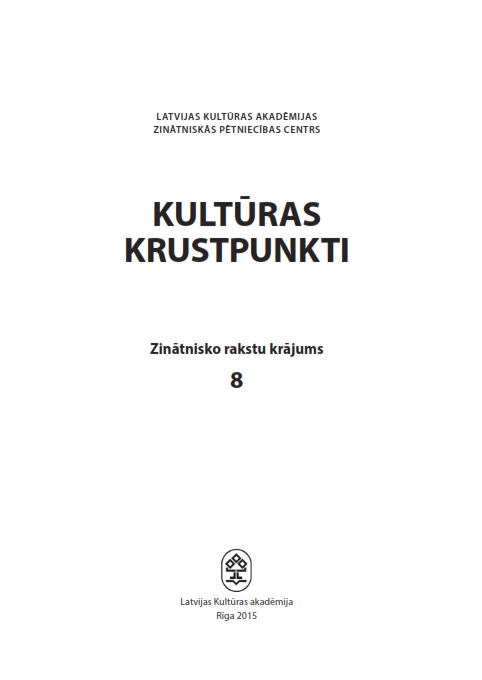ANNA (ASJA) LĀCIS KULTŪRU UN IDEOLOĢIJU
KRUSTPUNKTĀ
ANNA (ASJA) LĀCIS AT THE CROSSROADS OF CULTURES AND IDEOLOGIES
Author(s): Beata PaškevicaSubject(s): Theatre, Dance, Performing Arts, Cultural history, Aesthetics, History of ideas, Sociology of Culture, Sociology of Art, History of Art
Published by: Latvijas Kultūras akadēmija
Keywords: Asja Lācis, the theater of October; the amateur theater of leftist trade unions; children’s theater; proletarian cult;
Summary/Abstract: The article explores the course of formation of the positions of Asja Lācis’s theatre aesthetics in the early period of her activity, mainly in Riga during the 1920s. The article takes a chronological look at the first theatre impressions of German and Latvian theatres in Riga. Special attention is paid to Asja Lācis’s change of aesthetic views under the influence of the Russian avant-garde. In contrast to the exuberance of Hedda Gabler and the existential loneliness in Ibsen’s psychological theatre, the new Russian avant-garde theatrical search stressed the biomechanical conception and the role of the actor as a player in a theatre company. The key position in Asja Lācis’s personal work of directing in Riga amateur theatre of the leftist trade unions was the aesthetic requirements of the proletarian cult and the theatre of October. She tried to create a radical avant-garde theatre and expressed her aesthetic views in a number of articles in the Latvian leftist press. Anna Lācis’s experiments in Oryol and the Riga theatres, which were based on her acquired experience of the Russian avant-garde, served as a catalyst for her further cooperation with Walter Benjamin and Bertolt Brecht; it also influenced the development of different contemporary theatre trends.
Journal: Culture Crossroads
- Issue Year: 8/2015
- Issue No: 2
- Page Range: 63-69
- Page Count: 7
- Language: Latvian

